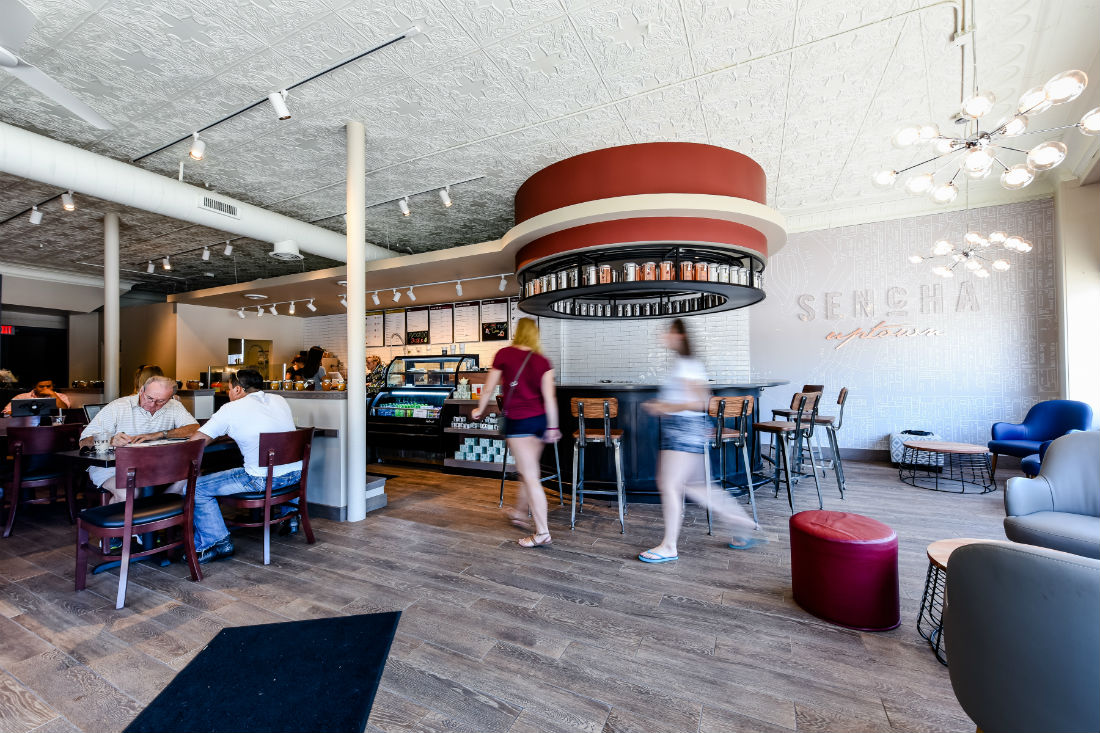At Shea, we pride ourselves on staying on top of what’s happening in design news. It helps us keep tabs on what’s fresh, inspiring, and happening in the world—and we make a few headlines of our own, too. Here are some recent articles delving into design, experience, and what’s buzzing in our community:
“Why You Should Bet on Fast-Casual After COVID-19” – QSR:
In the first of a two-part series, this research piece from QSR examines the potential growth for the fast-casual segment post-pandemic—asserting that the crisis will provide tailwinds that will bolster the industry. The article examines benefits from both the supply side (rationalized competitive dynamics and lower real-estate prices) and the demand side (the ability to pull market share from other traditional forms of dining), with graphs and stats to help explain and back it up.
“Coming Soon to Northeast: Vivir” – Shea:
A collection of opening news on Vivir in Northeast Minneapolis, slated for the former Popol Vuh space in September.
“Lessons Learned: Designing More Holistic Projects in a Post-Pandemic Era” – Work Design:
This piece looks at how post-pandemic workplace and hospitality spaces will take cues from healthcare’s evidence-based design process in future design, with spaces that are safe and promote wellness as well as humanity. Work Design breaks down the different zones and areas of a hospitality space and how they’re similar to those of a healthcare environment—lobby/lounge, back of house and front of house, work areas, dining experiences, and more. It also looks at differences in amenities and environments, and how other industries can continue to look at healthcare spaces for inspiration and guidance by way of everything from indoor/outdoor integration to furniture and finishes.
“Renovations Could Be Hospitality’s Stopgap For Next Few Years” – Building Design + Construction:
What’s next for hotel projects as the hospitality industry begins recovery from the coronavirus outbreak, anticipating primarily renovation and adaptive reuse projects in the immediate future, especially as they wait on a coming onslaught of foreclosures with partially finished work. A primary factor in hotel survival will be making guests feel safe by way of new operational procedures and more flexible space for grab-and-go and prepackaged F&B options. Furthermore, we’ll see a bigger push for prefab and modular design options, versus custom, so that operators can make changes more easily and limit on-site labor.
“Shea Gives Tips for Patio Best Practices in Foodservice News” – Shea:
An interview with Shea Principal Tanya Spaulding in Foodservice News highlighting best practices for patio design to extend the reach and season.
“How Toilet Paper and Avocados Help Explain the Grocery Store of the Future” – Fast Company:
An examination of how COVID has shined a light on the norms of grocery stores and how they can be improved post-pandemic—namely, the difference between transactional and experiential purchases. For transactional purchases, people are likely to move to online shopping, but the in-person retail experience is important for experiential shopping. This article looks at the short, medium, and long-term effects of COVID on grocery, from the inclusion of one-way aisles and physical barriers to eventually including store-design features that push people to healthier options and behaviors, along with further advances in automation and intelligence.
“Post-COVID, More Office Designs Include Permanent Outdoor Workspace” – Metropolis:
While outdoor office spaces and a connectivity to nature have been popular in workplace design over the last several years, the trend is poised to explode as a result of COVID—and in ways that are more designed, more permanent, and allow for more seasons of usage. In warm-weather climates, open corridors and balconies will be especially popular, but terraces with multi-season adaptations (like wind buffers and retractable roofs) will become necessities for office buildings and even individual companies. These spaces will be equipped with power, shade, and WiFi to make them completely workable areas, with privacy considerations and furniture that can be easily reconfigured for distancing or meetings.
“What Buildings Will Look Like After the Covid Crisis” – Wall Street Journal:
This piece looks at how the results of COVID will impact high-end real estate in the future. The new must-have amenities will be features that separate residents and increase air flow (operational windows, home offices, balconies, multiple staircases/gyms/elevators), and developers are expecting to see rewards for adding those features now. The article includes diagrams for ventilation systems for individual apartment units, the optimal places to install glass dividers, and more features that will likely be incorporated into major commercial buildings going forward.
“10 Trends That Will Shape the Consumer Landscape of the Future” – Design:Retail:
A collection of trends from an intelligence survey regarding retail design, and what the next several years will look like. This piece details the new consumer values and cultural behaviors that will impact spending and retail design, including anti-excess consumerism (buying less, looking for low or no-waste options), protective tech and wearables, architecture centered on wellness, and new dining formats to keep up with the evolving experience of eating out.
“Shea Principal Gives the Scoop on What’s Next for Real Estate in Franchise Times” – Shea:
Along with a handful of other industry experts, Shea Principal Tanya Spaulding discusses the next phase of commercial real estate in Franchise Times.
August 21, 2020
Shea Links: August

